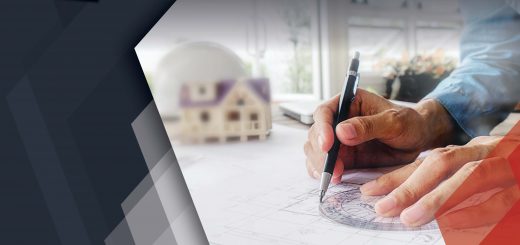Critical Aspects of Patent Drafting in View of ‘Non-Obviousness Requirement’
Shaping a patent application is a time and labour-intensive task. Thereafter, the last thing an applicant expects after a thorough submission is the rejection of the grant. Most of the patent applications in the past few years were rejected for not adhering to the rule of ‘Non-Obviousness’, which refers to one of the conditions of patentability. Hence, this article lists the key aspects of patent drafting in view of the ‘non-obviousness requirement’.
Table of Contents
What is ‘Non-Obviousness Requirement’?
An invention must be both novel and non-obvious in order to be patentable. ‘Non-obviousness’ is the term used in US patent law to describe one of the requirements that an invention must meet to qualify for patentability. This has been codified in 35 U.S.C. §103.
An invention is considered non-obvious when a “person having ordinary skill in the art” would not know how to solve the problem by using exactly the same mechanism. The condition of patentability referred to as non-obviousness, codified in 35 U.S.C. § 103, reads as follows:
“A patent for a claimed invention may not be obtained, notwithstanding that the claimed invention is not identically disclosed as set forth in section 102, if the differences between the claimed invention and the prior art are such that the claimed invention as a whole would have been obvious before the effective filing date of the claimed invention to a person having ordinary skill in the art to which the claimed invention pertains. Patentability shall not be negated by the manner in which the invention was made.”
Why Drafting a Patent in View of ‘Non-Obviousness Requirement’ is Important
On plain reading of the above statute, the ‘non-obviousness requirement’ codified in 35 U.S.C. § 103 seems to be pretty simple. But, in practice, determining if the invention is obvious is far more complicated and highly subjective. Here are a few reasons for the same.
- Indefinite Words: There is no clear-cut, straight-forward and standard definition of words ‘obvious’ and ‘a person having ordinary skill in the art’ as mentioned in 35 U.S.C. § 103. This has made non-obviousness the subject of debate ever since the first patent law was enacted.
- Uneven Application: It is quite possible that, in one technical field, the examiner may issue ‘allowable subject matter’ to an aspect of the patent application for which one may have expected ‘official notice’[2]. On the contrary, in other technical fields, the invention that is considered to be ‘non-obvious’, may get rejected by the examiner for being obvious[3]. Therefore, the obviousness criteria applied in one technical field is different from the other.
[2] See office action (dated Oct 26, 2020) of patent application No. US16369839
[3] See office action (dated Aug 03, 2020) of patent application No. US16085484
3. KSR v. Teleflex: In KSR v. Teleflex[4] case, the Supreme Court said that the ‘teaching, suggestion or motivation’ test was too restrictive. It also emphasized that the question – whether an invention is obvious – is one of “common sense.” However, the top court didn’t really define “common sense”. This induced more subjectivity in the determination of the obviousness].
Moreover, courts have said that the determination of the obviousness is a question of law[5],[6]. Similarly, there are several other reasons which make the determination of the obviousness highly subjective, but they are beyond the scope of this article. Also, perhaps, such subjectivity in the determination of the obviousness is the reason behind the fact that rejection under 35 U.S.C. § 103 is one of the most common grounds of patent application rejection in the past few years, as mentioned in the article above.
How to Draft Patent Application in View of ‘Non-Obviousness Requirement’
Having understood the complex nature and implications of 35 U.S.C. § 103, it is clear that one should give pragmatic thoughts to this section. The right questions to ask are – how can we position an invention in the patent application in view of 35 U.S.C. § 103? Can a patent application be drafted in a manner that it becomes immune to 35 U.S.C. § 103 rejection? Most importantly, how to draft solid specification that would help in framing arguments to obviate 35 U.S.C. § 103 rejection during the prosecution stage?
The points below attempt to answer these queries. Specifically, in this article, we will see what aspect(s) of the invention should be considered while drafting the patent application in view of the ‘non-obviousness requirement’.
A patent practitioner should ponder on these aspects while drafting a patent application:
1. Acknowledging Internal Problems: The technological difficulties faced in combining different claimed elements may be referred to as ‘internal problems’. One should consider whether ‘a person with ordinary skill in the art’ could have combined the claimed elements,[8] given the technological difficulties in combining them. However, do not confuse the internal problems with the external ones. External problems are the problems in the art that we are trying to solve through the invention. On the other hand, internal problems are created by the solution to the external problem, or problems faced while formulating the solution to the external problem. The internal problems and corresponding solution must be described in the patent application.
2. Technicalities of Combination: Another question to be considered is – do the elements in combination merely perform the function that each element performs separately[9] or does the combination portray significant improvement over the
[4] https://www.supremecourt.gov/opinions/06pdf/04-1350.pdf
[5] See MPEP 2141-Examination Guidelines for Determining Obviousness Under 35 U.S.C. 103 [R-10.2019]
[6] See KSR Inter., Co. v. Teleflex, Inc., 550 U.S. 398, 427 (2007)
[8]See https://www.uspto.gov/web/offices/pac/mpep/s2141.html
[9] See MPEP § 2141
- limitations of the prior-arts? Answer to such aspect(s) shall be described in the patent application by disclosing every nuance of each element in the combination.
- Reconstruction and Redesign: Lastly, one should examine whether the elements to be combined require a substantial reconstruction and/or redesign, so that they can be combined in a particular way [10] .
If an invention is analysed, described, and claimed in the aforesaid manner, then such a patent application will give the applicant an edge during prosecution and litigation. Specifically, it will provide enough support to respond to 35 U.S.C. § 103 rejection. In addition, it allows one to amend the claims in a better way to distinguish the invention from the prior art references cited by the examiner, during the prosecution stage.
Conclusion
Therefore, we can conclude that a good description of the internal problems will help in positioning the invention in view of ‘non-obviousness requirement’ and can certainly be a weapon against 35 U.S.C. 103 rejections.
Similarly, a patent application needs to disclose the invention with as many nuances as possible – mere sequential explanation of the steps carried out in the invention is not sufficient, one needs to start thinking about how to position the invention most favourably. This requires a comprehensive analysis of the invention and information about the current state of the art.
Sagacious IP’s patent drafting services are designed keeping in mind all the above-mentioned nuances. Our team of highly qualified draftsmen not only drafts patent applications in compliance with respective PTO guidelines but also ensures the broadest possible coverage.
– Kartik Kulkarni (ICT Drafting and Prosecution) and the Editorial Team
[10] In re Ratti, 270 F.2d 810, 813, 123 USPQ 349, 352 (CCPA 1959)
Having Queries? Contact Us Now!
"*" indicates required fields




